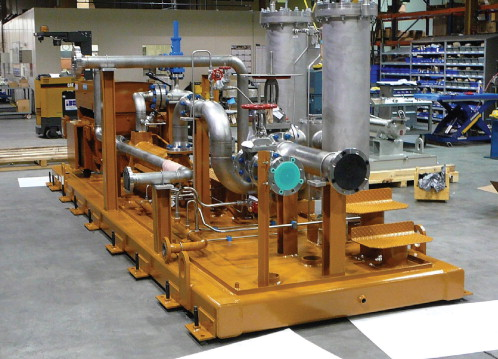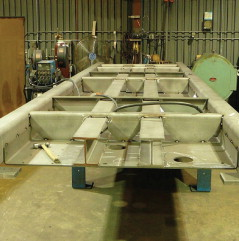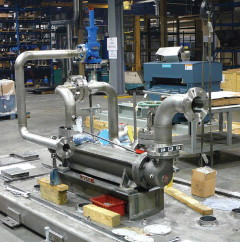


Mitsubishi Power Systems Americas (MPSA), like other gas-turbine suppliers, had to incur expenses each time it specified, ordered and provided separate equipment for fuel oil pumps, motors and other crucial components for end-user power generation facilities. Colfax Americas Engineered Systems responded with an integrated fuel oil system designed and built specifically for the power generation marketplace. By packaging the equipment into one unit, Colfax was able to deliver more value to MPSA. Colfax supplied an integrated system – with fuel filtration, injection, pump, piping and motor components – which decreased installation requirements at the utility and provided the kind of built-in savings benefits that come from dealing with a single supply source.
The need for a better system
Most large gas turbines are designed to operate with both gas and liquid fuels, including natural gas and No. 2 fuel oil. This need for fuel flexibility can present challenges. For example, the more pieces of equipment MPSA has to send to a job site at different times, the greater the logistics challenges, including timing delivery of the components.
MPSA turned to Colfax for help in determining the fastest, smartest and lowest-cost way to deliver fuel pumping and filtration equipment to its customers' power generation plants. Designing and implementing an entire fuel oil system was a new undertaking and MPSA relied on Colfax Americas Engineered Systems to design and create an integrated solution. Throughout the process Colfax worked closely with MPSA engineers in the United States and Japan.
“We maintained constant communications with MPSA to keep our client contacts updated on progress and seek feedback on our work,” said Jim Healey, design engineer for Colfax Americas Engineered Systems. “We wanted to make sure our solution was tailored to their needs and straightforward to install.”
The Colfax solution
Colfax experts engineered a solution to deliver fuel oil to the liquid fuel system under low pressure, typically 25 to 150 pounds per square inch gauge (psig). The fuel oil solution was an integrated unit containing a fuel filter, high-pressure screw pump, motor, base plate and piping – all in a single package. Installed onto one 20 foot base plate, the system used less than 15 feet of stainless steel piping to connect HILCO filters, regulating controls, a pressure-relief valve and an Imo AK12DHZ-350G pump. It was capable of delivering more than 350 gallons per minute, at a maximum pressure of 2,300 psig.
A significant benefit of having a positive-pressure fuel source is supercharged pump inlets, which allow operation at faster two-pole motor speeds. This gives the customer the advantage of higher-pressure/-viscosity performance and the ability to apply smaller pumps at higher speeds. The result is a more robust pump at a lower price to the turbine manufacturer, which keeps Colfax competitive in this very difficult application.
Colfax provided several value-added benefits which substantially improved the MPSA offering, including assigning an engineer-manager to manage the project. “We were able to go directly to him for all technical questions, order updates, quality inspections, etc., which greatly improved our communication and efficiency,” said Tim Shore, project manager for MPSA. “It was much easier for us to have a single contact, unlike our previous system of having to engineer our own solution and work with various suppliers.”
He continued, “Also, Colfax had an ‘open-door' policy and invited us to visit its facility as often as necessary to check on design, manufacturing and inspection, which gave us peace of mind. Colfax engineers were very receptive to us in discussing system design options, which assured that the system would meet MPSA's requirements.”
Across-the-board savings
The Colfax team significantly reduced costs associated with component design, arrangement and installation. Additionally, it cut product footprint by 30%. Moreover, cost savings extended beyond the system for procurement, engineering testing and validation, and energy consumption.
“Working with Colfax has been a very positive experience,” said Shore. “The company's knowledge of fuel oil systems and technical expertise helped us combine multiple system components into a single skid that meets our customers' needs. Colfax's flexibility and responsiveness have proven invaluable.”
The initial success of the Colfax integrated solution has already led to the adoption of the engineered design in other MPSA projects.






